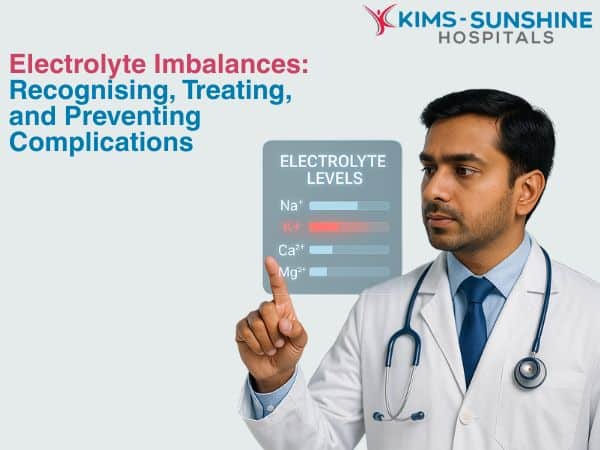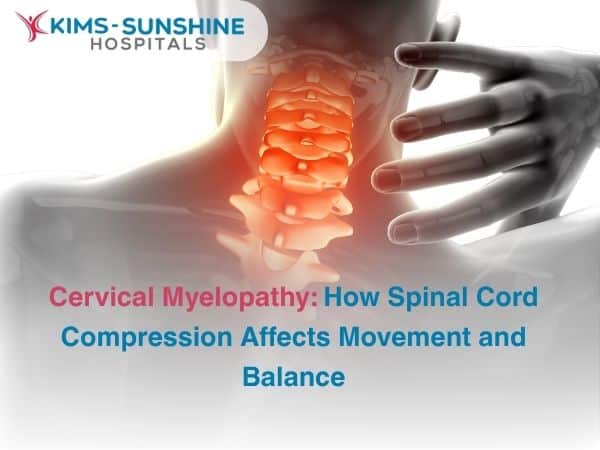
Electrolyte Imbalances: Recognising, Treating, and Preventing Complications
 Not everything out of place inside the body screams. Some disturbances are like warped piano keys, just slightly off, yet enough to ruin the whole melody. Electrolytes are small, invisible ions with large, invisible jobs. Examples include sodium, potassium, calcium, magnesium, chloride etc. among others. They live in the bloodstream and cells, managing the cellular pathways that make us human. When their levels shift, you may not know at first. It may feel like a light-headed moment, a twinge of a muscle that won’t quite release or it may be when you take too long to find the right word. These are not coincidences. They’re early murmurs from a system that has slipped out of balance. An electrolyte imbalance is not rare. It hides in fevers, follows the trail of dehydration or waits at the edge of exhaustion.
Not everything out of place inside the body screams. Some disturbances are like warped piano keys, just slightly off, yet enough to ruin the whole melody. Electrolytes are small, invisible ions with large, invisible jobs. Examples include sodium, potassium, calcium, magnesium, chloride etc. among others. They live in the bloodstream and cells, managing the cellular pathways that make us human. When their levels shift, you may not know at first. It may feel like a light-headed moment, a twinge of a muscle that won’t quite release or it may be when you take too long to find the right word. These are not coincidences. They’re early murmurs from a system that has slipped out of balance. An electrolyte imbalance is not rare. It hides in fevers, follows the trail of dehydration or waits at the edge of exhaustion.
Signs of Electrolyte Imbalance in Adults-
The most common sensations include:
- A creeping fatigue that is not solved by enough sleep
- Cramping in the calves or fingers, as though the muscles have forgotten how to let go
- A faint, persistent dizziness, like walking uphill indoors
- Confusion that arrives slowly, like fog at dawn
- A racing or fluttering heart, as if it’s lost count of its beats
- Tingling lips or limbs, or numbness that drifts without pattern
- Thirst that won’t be quenched, or a loss of appetite that’s inexplicable
- Occasional nausea, without food being the culprit
These are not always loud symptoms. But they add up and if you’re paying attention, your body will tell you when it has lost its flow.
Treatment for Low Potassium or Sodium-
Two of the most frequent players in this quiet drama are potassium and sodium. Though both are vital, they exist in a delicate tension,one inside the cells, the other outside. Disrupt that tension, and the entire electrical system trembles. Low potassium, or hypokalaemia, may be caused by diarrhoea, excessive sweating, overuse of certain medications like diuretics, or prolonged fasting. Treatment involves:
- Oral potassium supplements, taken gently, never rushed
- Intravenous potassium in emergency cases, with slow administration
- Addressing the cause and not just the level, because without understanding the ‘why’, it will happen again.
Low sodium, or hyponatraemia, may arise after too much fluid intake, certain hormone disorders, or kidney imbalances. Treatment must be cautious because restoring sodium too quickly can damage the brain.
Options include:
- Fluid restriction, especially in dilutional cases
- Salt supplementation, orally or intravenously
- Treating underlying conditions, such as adrenal or thyroid dysfunction
How to Fix Electrolyte Imbalance Naturally-
When the imbalance is mild, the body often welcomes a softer approach. Food and fluid become medicine in their own right:
- Coconut water is not just a trendy drink, but a natural electrolyte tonic
- Bananas, sweet potatoes, spinach are all rich in potassium and magnesium
- Greek yoghurt, almonds and leafy greens to help restore calcium and magnesium
- Broths and bone soups, for sodium and chloride replenishment
- Oral rehydration solutions, when needed, especially after illness
Just as important is avoiding the excess. Overhydrating with plain water can dilute sodium dangerously. High caffeine or alcohol intake may cause loss of vital minerals through urine.
When to Go to the Hospital for Electrolyte Issues-
There is a moment when home care can no longer be good for you and medical help becomes a non-negotiable factor. Seek immediate attention if:
- You feel suddenly confused or disoriented
- Your heart rate feels irregular, like it is fluttering or pounding unnaturally
- Muscle weakness spreads, especially if it affects your ability to breathe or move
- You faint
- You have a chronic illness and feel profoundly unwell
Conclusion
Electrolytes are the unsung guardians of every rhythm you carry. Their absence is never loud, but it is profound. They regulate thought without poetry, heartbeat without applause, muscle without motion. To pay attention to their rise and fall is to learn a deeper kind of listening. One that notices how thirst feels, how strength returns, how fatigue settles. Whether it is the warmth of broth on a tired day, or the cool pulse of an IV in a quiet hospital room, restoring electrolytes is not simply about balance. It is about returning the body to its native frequency, to the place where breath feels like breath again, where the muscles stretch and release and where the brain flickers back to clarity. Above all, it is a reminder – that what keeps us alive is often invisible and often forgotten. But it is always worth remembering.






